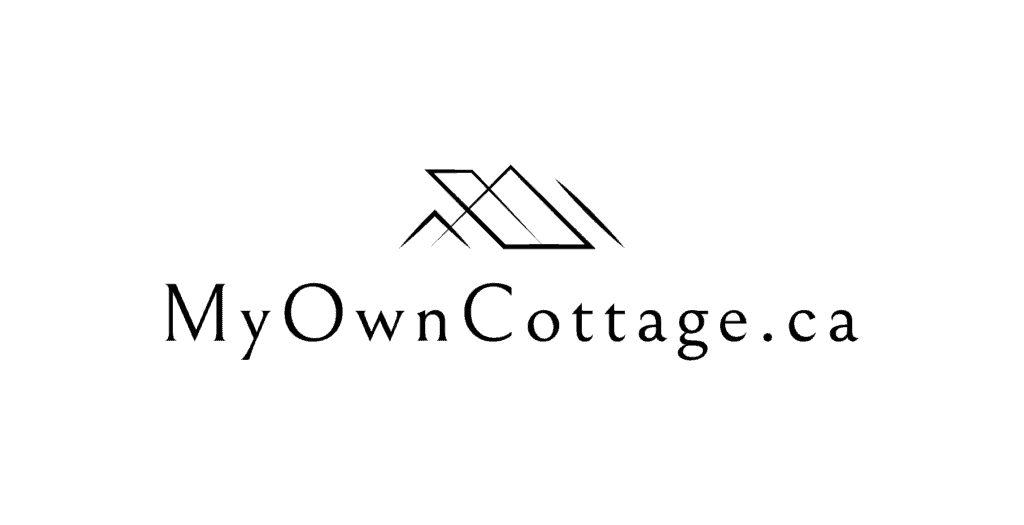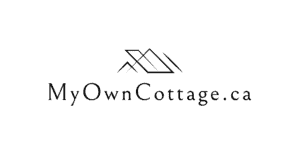Prefab Home Types in Toronto
Explore the best prefab home types in Toronto—from modern modular houses to cozy prefab cottages.
Discover energy-efficient, customizable, and cost-effective home solutions tailored to your lifestyle.
Build smarter with us today!
Home » Prefab Home Types in Toronto
Introduction to Prefab Home Types in Toronto
The demand for different prefab home types in Toronto has been steadily increasing as more homebuyers seek affordable, high-quality, and energy-efficient housing solutions.
In fact, the good news is that modular construction has evolved to provide homeowners with a faster, more cost-effective alternative to traditional stick-built homes.
For reference, we offer a wide range of prefab home designs and floor plans, allowing homebuyers to choose the perfect layout for their dream home.
The Housing Market in Toronto Today
As the housing market in Toronto, ON continues to grow, prefab homes offer a viable solution to address the housing crisis.
At My Own Cottage, we’re providing affordable housing options that meet Ontario’s building code requirements.
We’re at the forefront of providing innovative prefab solutions tailored to diverse homeowner needs.
In fact, our prefab homes Toronto collection offers modern, energy-efficient, and customizable housing solutions that offer fast construction with exceptional quality.
Your Complete Guide to Prefab Home Types in Toronto
Choosing the right prefab home can be overwhelming, especially with so many options available.
This guide will help you navigate the different prefab home types in Toronto.
We’ll look at everything from modern modular homes to eco-friendly prefab cottages and even custom-built houses.
You’ll discover the key benefits of each type, including design flexibility, energy efficiency, and cost-effectiveness.
By the end, you’ll have a clear understanding of which prefab home best fits your lifestyle, budget, and location within the City of Toronto.
Let’s dive in! 🏡✨
Overview of Prefab Home Types
Prefab homes come in several varieties, each with unique construction processes and benefits.
Understanding these differences can help prospective homeowners make informed decisions about their new home.
Modular Homes
Modular homes are built in a controlled environment of a factory, where sections (or modules) are prefabricated.
Upon completion, they are then transported to the building site for assembly.
These homes offer superior quality control, ensuring that building materials meet stringent standards.
Some key attributes of modular homes are:
Ideal for custom home projects and modular home additions
Faster construction time than traditional homes
Flexible floor plans for a personalized design experience
High energy efficiency with superior insulation and mechanical systems available
Panelized Homes
Panelized homes consist of prefabricated wall panels that are transported to the construction site and assembled on-site.
This method balances off-site efficiency with on-site flexibility, making it ideal for homeowners who want some level of customization without sacrificing speed.
Some key traits of panelized homes are:
Faster than traditional stick-built homes
Offers greater customization in plan design
Requires additional labor for on-site assembly
Works well for home renovations and second-story additions
Manufactured Homes
Manufactured homes are fully built in a factory and transported in one piece to the designated building site.
These homes tend to be the most cost-effective option, offering significant incredible savings.
Some important aspects of manufactured homes are:
Typically the best price among prefab options
Meets building code but may have certain zoning restrictions
Works well for vacation home or guesthouses
Less flexible in custom home modifications
Tiny Homes
Tiny homes are compact, sustainable, and ideal for urban living.
Often used as Accessory Dwelling Units (ADUs), garden suites, or housing units, tiny homes are a growing trend in Toronto, ON.
This is largely due to their affordability and eco-friendly environmental impact.
Some key traits of tiny homes are:
Efficient use of square feet (SQ. FT) with open-concept spaces
Suitable for housing crisis solutions and infill housing
Can be designed using passive house principles for energy efficiency
Often used as secondary dwellings or home improvement projects
Pros & Cons of Each Type
Home Customization
Modular houses and panelized homes provide the greatest flexibility for homeowners who want to create their own custom living spaces.
These homes allow for a high level of personalization in design, layout, and interior features.
Because they are constructed in sections, they offer the ability to expand or modify spaces as needed, making them an excellent long-term investment.
Manufactured homes, on the other hand, are typically less customizable due to their transportation limitations.
Since they are built as a single unit in a factory and then transported to the building site, there are restrictions on modifications.
However, some customization is possible, such as selecting interior finishes and minor layout adjustments.
In general, homeowners seeking extensive personalization may find modular or panelized homes a better fit.
Cost Efficiency
Manufactured homes are the most affordable of the prefab options, making them ideal for affordable housing initiatives.
Their streamlined construction process and factory-built efficiency allow for lower material and labor costs.
Naturally, this is making homeownership more accessible to a wider range of buyers.
Modular and panelized homes require a larger initial investment due to the additional work involved in transportation, site preparation, and assembly.
However, this higher upfront cost is often offset by their long-term durability and superior quality.
With better insulation, stronger structural integrity, along with a longer lifespan, these prefab options often result in lower maintenance and energy costs over time.
Construction Speed
The prefab home construction process in Toronto offers a fast, efficient, and cost-effective way to build high-quality homes with minimal on-site disruption.
Prefab homes are built in 50% less construction time compared to traditional stick-built homes, making them an attractive choice for those looking to move in quickly.
Since much of the building process takes place in a controlled environment of a factory, construction delays due to weather conditions are significantly minimized.
Additionally, supply chain disruptions have a lower impact on prefab homes since materials are ordered and utilized in a systematic manner.
This controlled environment ensures that the home is completed efficiently, without unexpected delays that are common with traditional on-site construction.
As a result, prefab homeowners can expect a faster turnaround from planning to move-in, making these homes a great solution for those in need of quick, high-quality housing options.
Best Type for Toronto’s Climate
Toronto’s cold climate and humid summers require prefab homes to be designed with high-quality insulation, triple-pane windows, and weather-resistant exteriors.
Homeowners should prioritize:
Energy efficiency through passive house standards
Use of wood and eco-friendly materials for sustainability
Robust mechanical systems including water heaters for winter months
Advanced ventilation systems to maintain indoor air quality
Local Regulations for Prefab Homes in Toronto
Zoning Laws
The City of Toronto has zoning restrictions that regulate lot sizes and where prefab homes can be placed
Accessory Dwelling Units (ADUs) and garden suites have specific zoning requirements
Building Codes & Permits
Prefab homes must comply with the Ontario Building Code (OBC)
A building permit is required for most housing project types, including modular home additions and second-story additions
Designing Your Prefab Home
Choosing the right floor plans and building plans for your lifestyle
Customizing interior design with modern amenities, dining room layouts, and open-concept spaces
Maximizing square feet (SQ. FT) with efficient plan design
Incorporating innovative designs for enhanced customer satisfaction
The Right Floor Plans and Building Plans for Your Lifestyle
Choosing the right floor plans and building plans is essential in ensuring a home that fits your lifestyle.
When selecting a plan, it is important to consider both functionality and aesthetics.
Factors such as the number of bedrooms, overall layout, and the efficient use of space play a vital role in the decision-making process.
Homeowners should assess their current and future needs, ensuring their chosen floor plan aligns with their living requirements and personal preferences.
Customizing Interior Design With Modern Amenities
Customization plays a crucial role in making a prefab home feel unique.
Modern prefab homes offer a variety of interior design options, including modern amenities, flexible dining room layouts, and open-concept spaces.
These interior design features enhance comfort and flow.
Homeowners can also choose from different finishes, cabinetry styles, flooring materials, and lighting fixtures.
All to personalize their space to reflect their tastes and lifestyles.
The ability to select high-quality fixtures and smart home features ensures that the home is both stylish and functional.
Maximizing Square Feet (SQ. FT) With Efficient Plan Design
Maximizing square feet (SQ. FT) efficiently is another important aspect of prefab home design.
Thoughtful plan design ensures that every inch of space is optimized for practicality and comfort.
Open layouts, built-in storage solutions, and multi-purpose rooms can make a home feel spacious and inviting without requiring a larger footprint.
This approach is particularly valuable for smaller prefab homes, where efficient space planning makes a significant difference in everyday living.
Incorporating innovative designs
Innovative designs are integral to enhancing customer satisfaction.
Modern prefab homes integrate the latest architectural trends, energy-efficient solutions, and high-performance materials.
All to deliver aesthetically appealing and sustainable homes.
Smart floor plans that prioritize natural light, indoor-outdoor connectivity, and energy-saving features create an elevated living experience while also reducing long-term costs.
By incorporating cutting-edge designs, prefab homeowners can enjoy a beautiful and highly functional home tailored to their specific needs.
Cost & Affordability of Prefab Homes
The cost of a prefab home varies significantly depending on the project type and manufacturing process.
Factors such as the materials used, the complexity of the design, and transportation logistics all contribute to the final price.
Modular homes along with panelized homes, for instance, require more structural reinforcement and customization options.
This is making them more expensive upfront but providing long-term savings through durability and energy efficiency.
Comparing a New Home With a Home Kit
When comparing a new home with a home kit, budget-conscious buyers must consider their overall financial goals.
A home kit offers a cost-effective approach, as buyers purchase pre-designed materials and assemble the home themselves.
They may also choose to hire contractors for assistance.
This can result in significant labor savings, but it requires careful planning and project management.
On the other hand, a new prefab home that is factory-built and installed by professionals ensures quality control and a streamlined process, albeit at a higher cost.
Ultimately, the best option depends on the buyer’s budget, desired level of customization, and construction timeline.
Prefab Homes and the Toronto Real Estate Market
There is a growing impact of modular project developments on real estate market in Greater Toronto
The modular housing initiative is creating supportive housing and infill housing throughout the city
Sustainability & Mechanical Systems in Prefab
Indoor air quality and mechanical systems ensure comfort and efficiency
Advanced water heaters and energy efficiency features reduce long-term costs
Sustainable materials help combat climate change and reduce environmental impact
Getting Started with a Prefab Home in Toronto
How to find prefab homes with a free consultation or free estimate
Working with general contractors, a project manager, and experienced construction crews
Choosing reliable modular home builders with years of experience
Ensuring your builder cares about customer satisfaction throughout the construction process
Is a Prefab Home in Toronto Right for You?
Prefab homes provide a modern, efficient, and cost-effective alternative to traditional housing in Toronto, ON.
Whether you’re looking for a custom home, a vacation home, or a housing project solution, prefab construction offers a range of significant benefits.
Solutions for Your Dream Home
With advances in modular construction, increased customer satisfaction, and ongoing improvements in building materials, the future of Prefab Home Types in Toronto is bright.
To get started, explore our building plans, connect with us as your modular home builders, and schedule a free consultation to get started today!
For convenience, you can also simply fill out the form below and we’ll get back to you soon!

